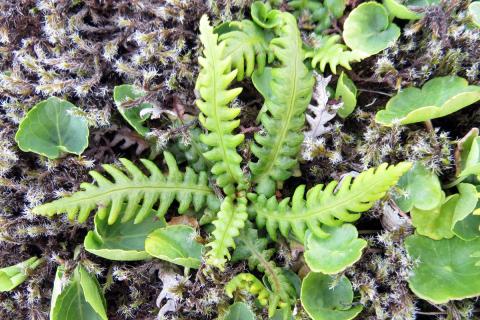Red Lists and protection
Red Lists are inventories of biological species that are threatened or at risk of extinction, or have already gone extinct. The criteria of the International Union for Conservation of Nature (IUCN) are used in preparing Red Lists. Using these criteria requires fairly precise knowledge of species distribution, the total number of individuals of the species, and population dynamics.
The Icelandic Institute for Natural History compiles Red Lists for the biota of Iceland. The IINH Red List for Vascular Plants was most recently published in 2018. An older version was published in 2008. The IINH Red List for Plants was first published in 1996 and also includes assessments for species of lichen, mosses, and benthic algae.

Vascular plants
The IINH Red List for Vascular Plants from 2018 assesses the status of all vascular plants in Iceland except for microspecies of hawkweeds (Hieracium) and dandelions (Taraxacum). They are grouped into seven risk categories according to IUCN criteria. Of these species, 56 are on the IINH’s 2018 Red List.
Mosses
The IINH Red List for Plants from 1996 (in Icelandic) includes 74 species of class Bryopsida. Scientific knowledge of Anthocerotopsida and Marchantiopsida was determined to be inadequate to assess species of these classes.
Lichens
The IINH Red List for Plants from 1996 (in Icelandic) includes 67 lichen species. Assessment was only carried out for fruticose and foliose lichen species, which comprise just under half of known lichen species in Iceland. Assessment of lichens on the Red List has not been revised since 1996, as data on the distribution of most species is lacking.
Protection
In addition to the Red Lists, some species are protected under the Advertisement on the protection of vascular plants, mosses and lichens. It is forbidden to break off shoots, leaves, flowers, or roots of these protected species, to step on them, to dig them up, or to otherwise compromise these plants.